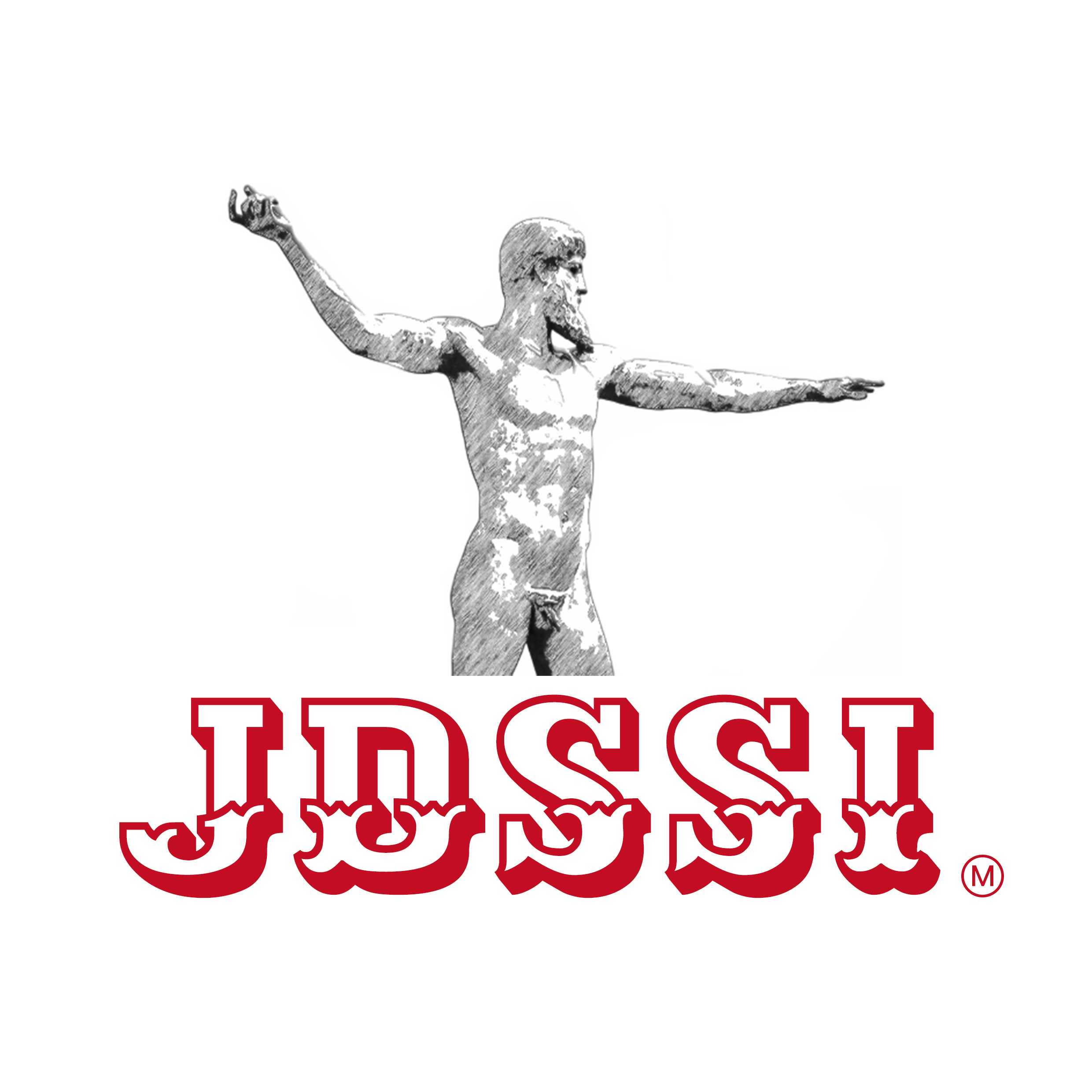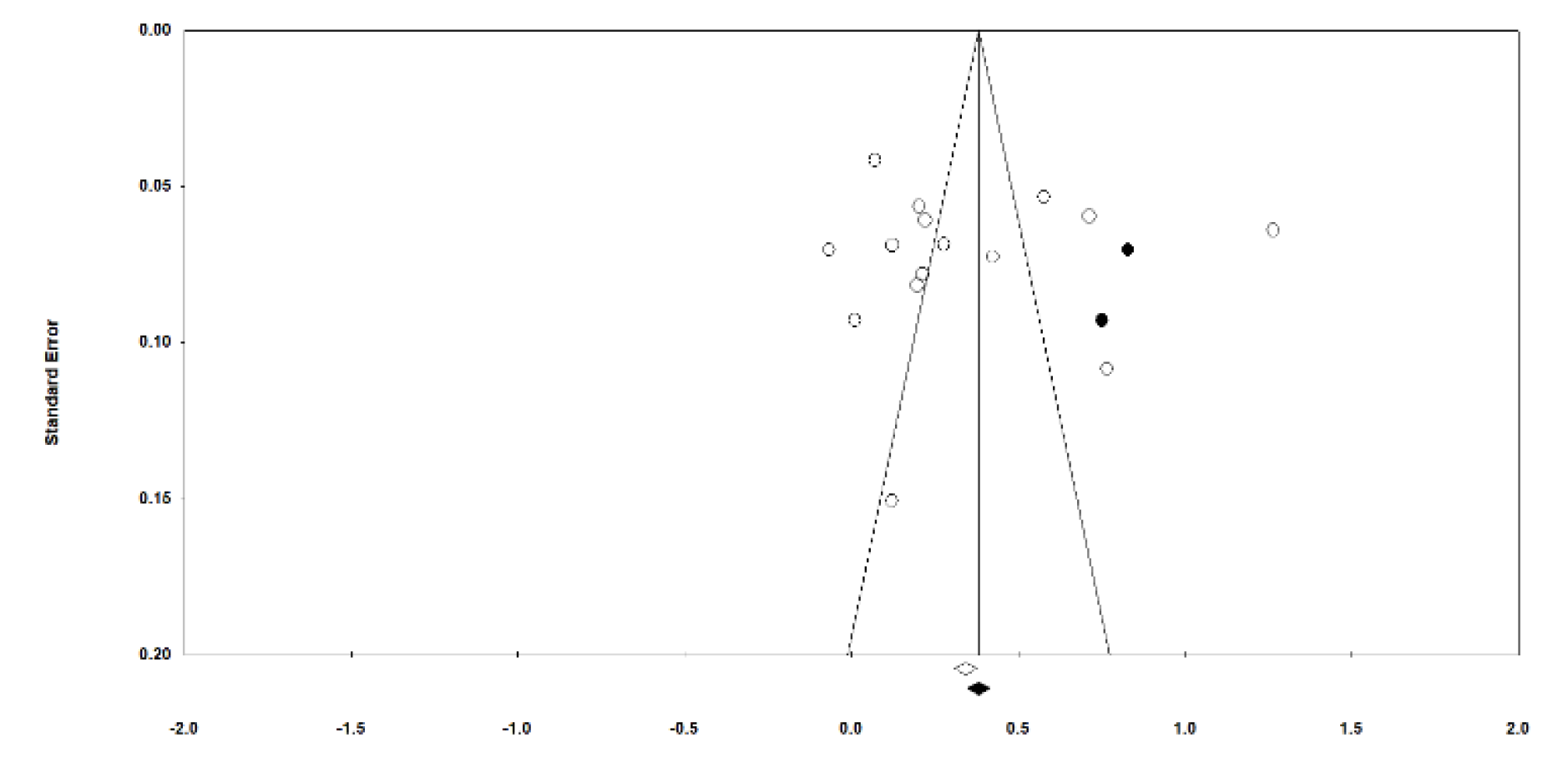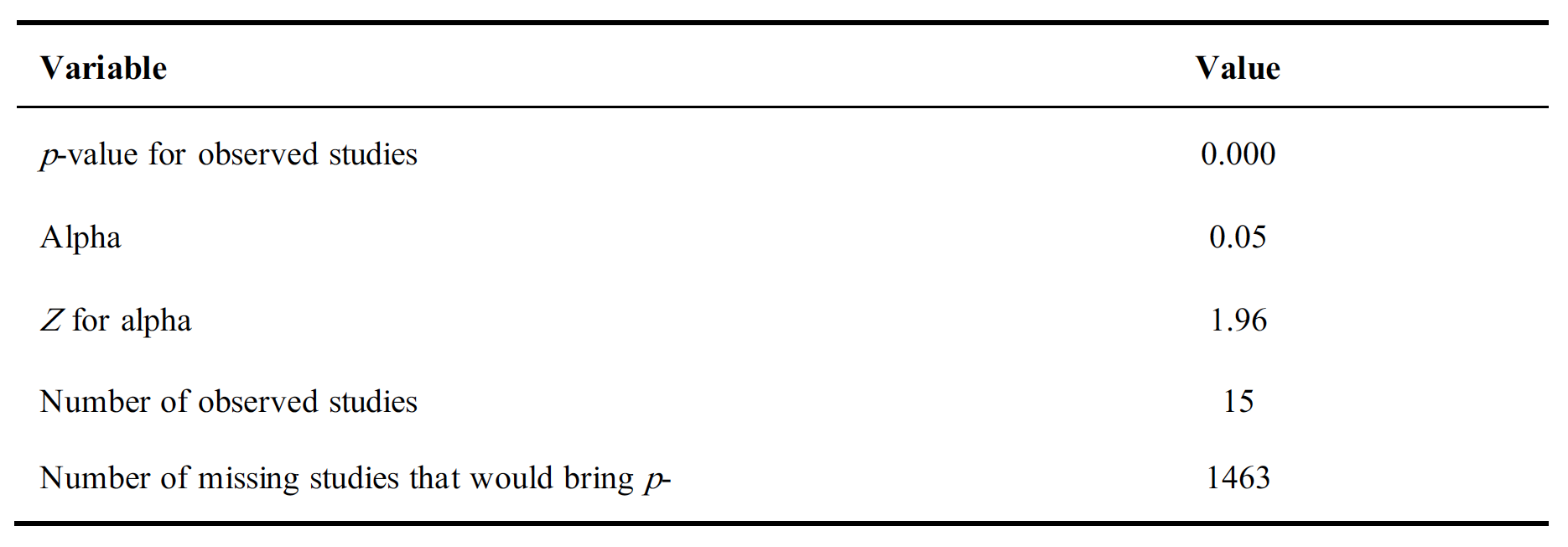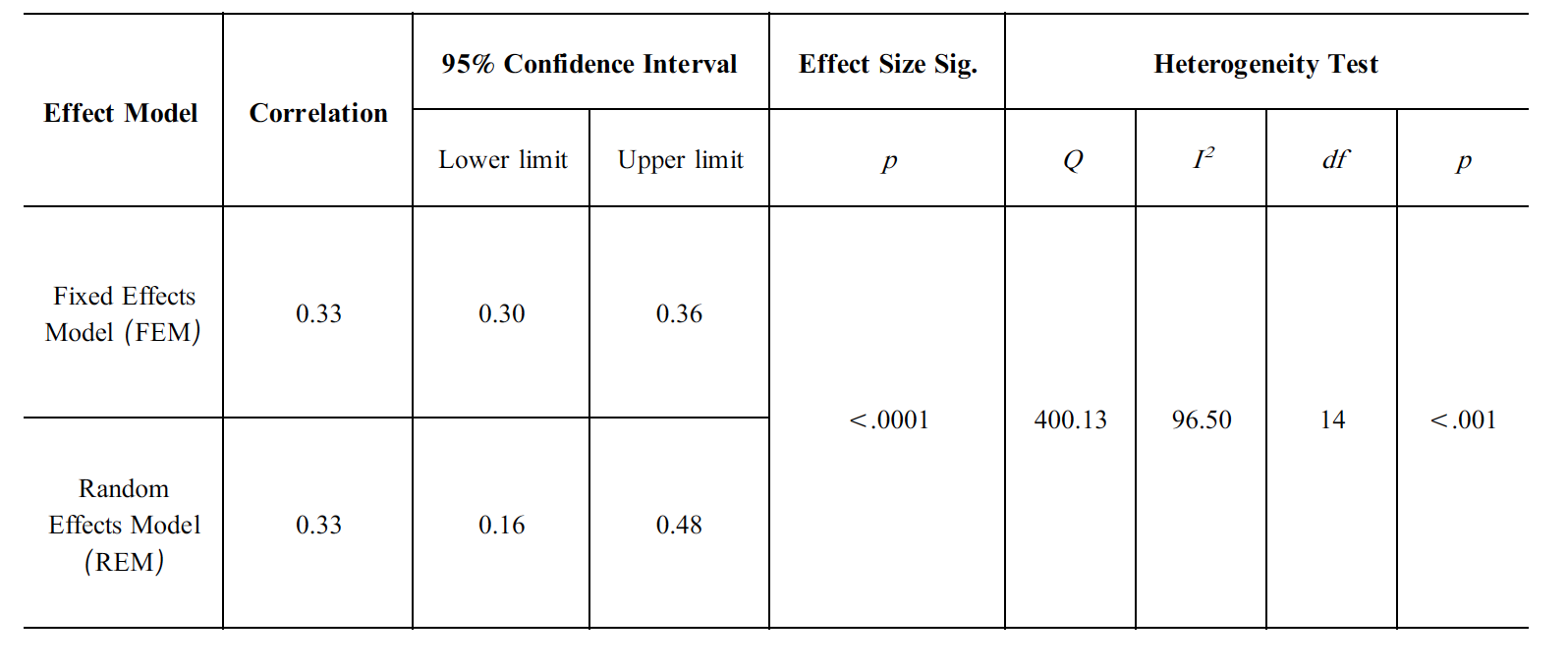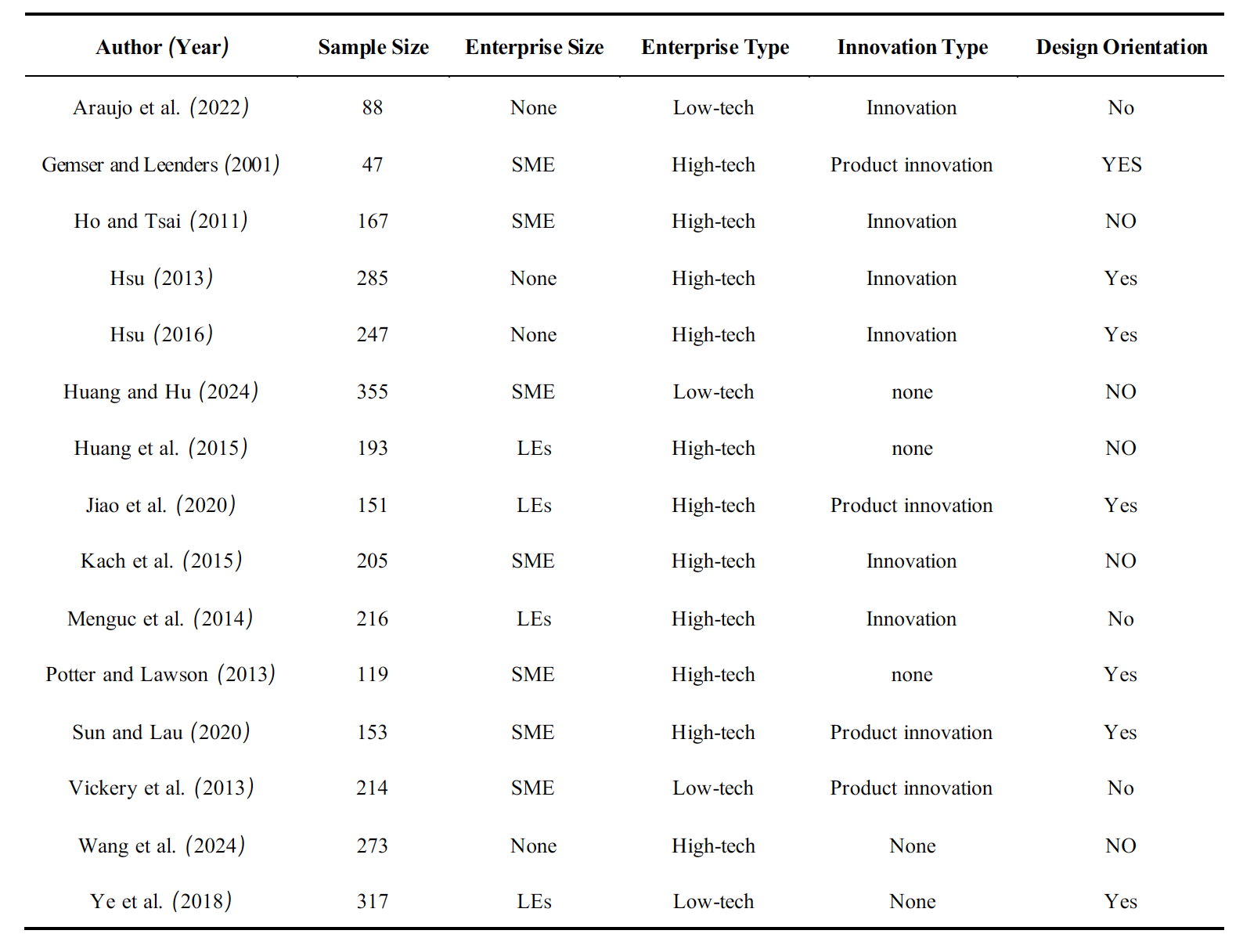3. Results
3.1. Data Analysis
In this study, CMA was used to analyze the data. Effect sizes are important measures of the strength of experimental effects or the degree to which variables are related, regardless of sample sizes [41]. To synthesize existing research, this study utilized the random effects model proposed by Borenstein et al. [42] to further examine the heterogeneity of the samples. The specific operational procedures included heterogeneity testing, publication bias assessment, sensitivity analysis, and moderator variable analysis, among others.
3.2. Heterogeneity Test
The issue of heterogeneity arises from differences in sample selection, survey methods, and analytical approaches among studies. The purpose of testing for heterogeneity is to determine whether the effect sizes from different studies are heterogeneous. Therefore, it is necessary to select an appropriate effect model according to the heterogeneity test results. Table 2 shows the heterogeneity test results and the overall effect size distribution of the meta-analysis (Q = 400.13, p < 0.001, I² = 96.5%), indicating heterogeneity among all samples. Rosenthal [43] suggested that the random effects model should be used for analysis when there was large heterogeneity among samples, so this study adopted the random effects model to eliminate heterogeneity (Table 2).
References
1. Araujo, Tiago Ribeiro de, et al. “Influence of new product development best practices on performance: an analysis in innovative Brazilian companies.” Journal of Business & Industrial Marketing 37, no. 2 (2022): 266-281. [CrossRef]
2. Hsu, Yen. “A value cocreation strategy model for improving product development performance.” Journal of Business & Industrial Marketing 31, no. 5 (2016): 695-715. [CrossRef]
3. Jiao, Yuanyuan, Yepeng Wu, and Qiang Steven Lu. “Improving the performance of customer participation in new product development: the moderating effect of social media and firm capabilities.” Asian Journal of Technology Innovation 28, no. 2 (2020): 284-304. [CrossRef]
4. Hsu, Yen. “A value cocreation strategy model for improving product development performance.” Journal of Business & Industrial Marketing 31, no. 5 (2016): 695-715. [CrossRef]
5. Roper, Stephen, Pietro Micheli, James H. Love, and Priit Vahter. “The roles and effectiveness of design in new product development: A study of Irish manufacturers.” Research Policy 45, no. 1 (2016): 319-329. [CrossRef]
6. Wrigley, Cara, and Karla Straker. Affected: Emotionally engaging customers in the digital age. John Wiley & Sons, 2019.
7. Cooper, Robert G. “The drivers of success in new-product development.” Industrial marketing management 76 (2019): 36-47. [CrossRef]
8. Dell’Era, Claudio, Stefano Magistretti, and Roberto Verganti. “Exploring collaborative practices between SMEs and designers in the Italian furniture industry.” In Researching open innovation in SMEs, pp. 307-345. 2018. [CrossRef]
9. Micheli, Pietro, Helen Perks, and Michael B. Beverland. “Elevating design in the organization.” Journal of Product Innovation Management 35, no. 4 (2018): 629-651. [CrossRef]
10. Rocco, Sanja, and Aleksandra Pisnik. “The conceptual framework for integrating market and design orientation within marketing.” Economic and Social Development: Book of Proceedings (2016): 516.
11. Li, Lingjia, Jing Dai, Bin Guo, and Yongyi Shou. “The effects of the fuzzy front end and cross-functional interfaces in the NPD process.” Industrial Management & Data Systems 123, no. 6 (2023): 1736-1767. [CrossRef]
12. Mu, Jifeng, Ellen Thomas, Gang Peng, and Anthony Di Benedetto. “Strategic orientation and new product development performance: The role of networking capability and networking ability.” Industrial Marketing Management 64 (2017): 187-201. [CrossRef]
13. Cheng, Colin CJ, and Dennis Krumwiede. “Enhancing the performance of supplier involvement in new product development: the enabling roles of social media and firm capabilities.” Supply Chain Management: An International Journal 23, no. 3 (2018): 171-187. [CrossRef]
14. Cui, Anna S., and Fang Wu. “Utilizing customer knowledge in innovation: antecedents and impact of customer involvement on new product performance.” Journal of the Academy of Marketing Science 44 (2016): 516-538. [CrossRef]
15. Hsu, Yen. “Design Co-creation and Performance in New Product Development Process.” International Journal of Business Research and Management 4, no. 3 (2013): 63-74.
16. Ignatius, Joshua, et al. “The impact of technological learning on NPD outcomes: The moderating effect of project complexity.” Technovation 32, no. 7-8 (2012): 452-463. [CrossRef]
17. Kong, Ting, Gang Li, Taiwen Feng, and Linyan Sun. “Effects of marketing–manufacturing integration across stages of new product development on performance.” International Journal of Production Research 53, no. 8 (2015): 2269-2284. [CrossRef]
18. Sun, Hongyi, and Antonio Lau. “The impact of modular design and innovation on new product performance: The role of product newness.” Journal of Manufacturing Technology Management 31, no. 2 (2020): 370-391. [CrossRef]
19. Mu, Jifeng, Ellen Thomas, Gang Peng, and Anthony Di Benedetto. “Strategic orientation and new product development performance: The role of networking capability and networking ability.” Industrial Marketing Management 64 (2017): 187-201. [CrossRef]
20. Dorst, Kees, and Rodger Watson. “There is no such thing as strategic design.” Design studies 86 (2023): 101185. [CrossRef]
21. Hedges, Larry V., and Ingram Olkin. Statistical methods for meta-analysis. Academic press, 2014.
22. Lipsey, M. W., and D. B. Wilson. Practical meta-analysis. SAGE publications, Inc, 2014.
23. Hedges, Larry V., and Ingram Olkin. Statistical methods for meta-analysis. Academic press, 2014.
24. Luiz, Octaviano Rojas, et al. “Impact of critical chain project management and product portfolio management on new product development performance.” Journal of Business & Industrial Marketing 34, no. 8 (2019): 1692-1705. [CrossRef]
25. Canto Primo, Monica, Irene Gil-Saura, and Marta Frasquet-Deltoro. “The role of marketing and product design in driving firm’s performance.” Journal of Product & Brand Management 30, no. 2 (2021): 231-243. [CrossRef]
26. Hsu, Yen. “A value cocreation strategy model for improving product development performance.” Journal of Business & Industrial Marketing 31, no. 5 (2016): 695-715. [CrossRef]
27. Roper, Stephen, Pietro Micheli, James H. Love, and Priit Vahter. “The roles and effectiveness of design in new product development: A study of Irish manufacturers.” Research Policy 45, no. 1 (2016): 319-329. [CrossRef]
28. Wrigley, Cara, and Karla Straker. Affected: Emotionally engaging customers in the digital age. John Wiley & Sons, 2019.
29. Hsu, Yen. “Exploring design innovation and performance: the roles of issue related to design strategy.” Journal of Engineering Design 20, no. 6 (2009): 555-569. [CrossRef]
30. Dorst, Kees, and Rodger Watson. “There is no such thing as strategic design.” Design studies 86 (2023): 101185. [CrossRef]
31. Simeone, Luca. “Characterizing strategic design processes in relation to definitions of strategy from military, business and management studies.” The Design Journal 23, no. 4 (2020): 515-534. [CrossRef]
32. Cooper, Robert G. “The drivers of success in new-product development.” Industrial marketing management 76 (2019): 36-47. [CrossRef]
33. Hsu, Yen. “A value cocreation strategy model for improving product development performance.” Journal of Business & Industrial Marketing 31, no. 5 (2016): 695-715. [CrossRef]
34. Canto Primo, Monica, Irene Gil-Saura, and Marta Frasquet-Deltoro. “The role of marketing and product design in driving firm’s performance.” Journal of Product & Brand Management 30, no. 2 (2021): 231-243. [CrossRef]
35. Sarooghi, Hessamoddin, Dirk Libaers, and Andrew Burkemper. “Examining the relationship between creativity and innovation: A meta-analysis of organizational, cultural, and environmental factors.” Journal of business venturing 30, no. 5 (2015): 714-731. [CrossRef]
36. Hedges, Larry V., and Ingram Olkin. Statistical methods for meta-analysis. Academic press, 2014.
37. Sarooghi, Hessamoddin, Dirk Libaers, and Andrew Burkemper. “Examining the relationship between creativity and innovation: A meta-analysis of organizational, cultural, and environmental factors.” Journal of business venturing 30, no. 5 (2015): 714-731. [CrossRef]
38. Chang, Woojung, and Steven A. Taylor. “The effectiveness of customer participation in new product development: A meta-analysis.” Journal of Marketing 80, no. 1 (2016): 47-64. [CrossRef]
39. Evanschitzky, Heiner, Martin Eisend, Roger J. Calantone, and Yuanyuan Jiang. “Success factors of product innovation: An updated meta‐analysis.” Journal of product innovation management 29 (2012): 21-37. [CrossRef]
40. Moher, D. et al. “Preferred Reporting Items for Systematic Reviews and Meta-Analyses: The PRISMA Statement (Chinese Edition).” Journal of Chinese Integrative Medicine 7, no. 9 (2009): 889–896. [CrossRef]
41. Kelley, Ken, and Kristopher J. Preacher. “On effect size.” Psychological methods 17, no. 2 (2012): 137. [CrossRef]
42. Borenstein, Michael, Larry V. Hedges, Julian PT Higgins, and Hannah R. Rothstein. Introduction to meta-analysis. John wiley & sons, 2021. [CrossRef]
43. Rosenthal, Robert. “The file drawer problem and tolerance for null results.” Psychological bulletin 86, no. 3 (1979): 638. [CrossRef]
44. Rothstein, Hannah R., Alexander J. Sutton, and Michael Borenstein. “Publication bias in meta‐analysis.” Publication bias in meta‐analysis: Prevention, assessment and adjustments (2005): 1-7. [CrossRef]
45. Rosenthal, Robert. “The file drawer problem and tolerance for null results.” Psychological bulletin 86, no. 3 (1979): 638. [CrossRef]
46. Cohen, J. “A Power Primer.” Psychological Bulletin 112, no. 1 (1992): 155–159. [CrossRef]
47. Sarooghi, Hessamoddin, Dirk Libaers, and Andrew Burkemper. “Examining the relationship between creativity and innovation: A meta-analysis of organizational, cultural, and environmental factors.” Journal of business venturing 30, no. 5 (2015): 714-731. [CrossRef]
48. Ahammad, Mohammad F., Keith W. Glaister, and Emanuel Gomes. “Strategic agility and human resource management.” Human Resource Management Review 30, no. 1 (2020): 100700. [CrossRef]
49. Xing, Yijun, Yipeng Liu, Dev K. Boojihawon, and Shlomo Tarba. “Entrepreneurial team and strategic agility: A conceptual framework and research agenda.” Human Resource Management Review 30, no. 1 (2020): 100696. [CrossRef]
50. Ferraris, Alberto, et al. “Microfoundations of strategic agility in emerging markets: empirical evidence of Italian MNEs in India.” Journal of World Business 57, no. 2 (2022): 101272. [CrossRef]
51. Fourné, Sebastian PL, Justin JP Jansen, and Tom JM Mom. “Strategic agility in MNEs: Managing tensions to capture opportunities across emerging and established markets.” California Management Review 56, no. 3 (2014): 13-38. [CrossRef]
52. Calantone, Roger J., Kwong Chan, and Anna S. Cui. “Decomposing product innovativeness and its effects on new product success.” Journal of Product Innovation Management 23, no. 5 (2006): 408-421. [CrossRef]
53. Ho, Yung-Ching, and Ching-Tzu Tsai. “Front end of innovation of high technology industries: The moderating effect of front-end fuzziness.” The Journal of High Technology Management Research 22, no. 1 (2011): 47-58. [CrossRef]
54. Mu, Jifeng, Gang Peng, and Douglas L. MacLachlan. “Effect of risk management strategy on NPD performance.” Technovation 29, no. 3 (2009): 170-180. [CrossRef]
55. Song, Michael, and Morgan Swink. “Marketing–manufacturing integration across stages of new product development: Effects on the success of high-and low-innovativeness products.” IEEE Transactions on Engineering Management 56, no. 1 (2009): 31-44. [CrossRef]
56. Li, Lingjia, Jing Dai, Bin Guo, and Yongyi Shou. “The effects of the fuzzy front end and cross-functional interfaces in the NPD process.” Industrial Management & Data Systems 123, no. 6 (2023): 1736-1767. [CrossRef]
57. Mu, Jifeng, Gang Peng, and Douglas L. MacLachlan. “Effect of risk management strategy on NPD performance.” Technovation 29, no. 3 (2009): 170-180. [CrossRef]
58. Doz, Yves. “Fostering strategic agility: How individual executives and human resource practices contribute.” Human Resource Management Review 30, no. 1 (2020): 100693. [CrossRef]
59. Mu, Jifeng, Ellen Thomas, Gang Peng, and Anthony Di Benedetto. “Strategic orientation and new product development performance: The role of networking capability and networking ability.” Industrial Marketing Management 64 (2017): 187-201. [CrossRef]
60. Hsu, Yen. “Design Co-creation and Performance in New Product Development Process.” International Journal of Business Research and Management 4, no. 3 (2013): 63-74.
61. Micheli, Pietro, et al. “Doing design thinking: Conceptual review, synthesis, and research agenda.” Journal of Product innovation management 36, no. 2 (2019): 124-148. [CrossRef]
62. Canto Primo, Monica, Irene Gil-Saura, and Marta Frasquet-Deltoro. “The role of marketing and product design in driving firm’s performance.” Journal of Product & Brand Management 30, no. 2 (2021): 231-243. [CrossRef]
1. Literature Review
1.1. NPD Performance and Design Orientation
The deployment of decisions by company executives and managers often involves NPD performance, and it is crucial to make the right decisions at the early stages of product development; they will determine future decisions [24]. Many studies have emphasized that design and innovation have a key role in improving NPD performance [25, 26, 27, 28]. Design strategy innovation can help improve advantage in addition to product innovation [29], and has provoked scholars to rethink and redefine strategy at the design level [30, 31], and strategic product design can provide competitive NPD advantages [32]. It has been shown in empirical studies [33] that strategic considerations at the design level can have a significant impact on NPD performance, and that design strategy together with other dimensions of strategy, such as marketing strategy and innovation strategy, can bring about an enhancement in NPD performance, and the multidimensional strategy pattern formed in this way also demonstrates the complexity of NPD.
In recent years, design orientation has become a measure of design competence, culture, and design management capabilities, which represents companies’ integration of design thinking into their corporate cultures and strategic management of design in order to gain an advantage in NPD [34], but most of the current relevant studies are mainly qualitative and the results they produce are mostly inconclusive, and there is still a lack of sufficient evidence about the actual performance and strategic impact of design orientation in NPD, as well as about the role between design orientation and other strategic competencies. Because of this, this study will investigate the important role of design orientation by determining whether design is used as a strategic orientation for NPD in the meta-analyzed literature in the form of binary variable [35].
1.2. Assembling
Meta-analysis has a long history. The method has been widely used to systematically evaluate problems of inconsistency in research findings, especially as the number of empirical studies in the field of education has increased. As an alternative to qualitative methods, meta-analysis is gradually becoming a common quantitative approach in the social sciences, with existing journals and studies encouraging its use for literature review and research [36]. In the field of business and management, researchers have used meta-analysis to explore the positive relationship between creativity and innovation, and have found that organizational, cultural, and environmental factors positively moderate this relationship, providing insights for entrepreneurship and innovation management [37]. Chang and Taylor [38], on the other hand, explored the role of contextual factors and their moderating effects between customer engagement and NPD performance at different stages of customer engagement.
Evanschitzky et al. [39] reviewed the success factors for achieving product innovation more comprehensively with the help of meta-analysis, emphasizing that the importance of success factors decreases over time, making an important contribution to the success of NPD in different cultural contexts. All of these studies demonstrate the breadth of meta-analytic applications and have contributed to research related to NPD, helping researchers to gain a more nuanced and comprehensive understanding of the mechanisms that operate at each stage of NPD and providing a clearer perspective on the field. In exploring the strategic factors of NPD, fewer scholars have used meta-analysis for quantitative research and there is little evidence of the interaction between design orientation and other strategic capabilities. Therefore, this study will attempt to develop relevant research on this topic with a meta-analysis approach.
Author Contributions
Jinchun. Lai 50% contribution: Literature collection and exploration, data analysis, and writing of the study text. Yen Hsu 50% contribution: Identification of research topic, development of research motivation and purpose, analysis of research results.
Funding
This research was supported by the General Project of Humanities and Social Sciences Research, Ministry of Education, under grant number 24YJCZH009; and the Youth Project of Social Science Foundation of Fujian Province, under grant number FJ2025C113.
Acknowledgements
Not Applicable.
Conflicts of Interest
The author declares that they have no conflicts of interest related to this research.
Author Biographies
- JinChun. Lai researches in the field of design strategy and design innovation and is a PhD candidate in the Graduate Institute of Design Science at Tatung University.
- Yen Hsu researches in the field of design strategy and design innovation, and is the associate dean of the School of Design at Tatung University, where he is also the director of the Graduate Institute of Design Science.
2. Methodology
The literature review found several exploratory empirical studies, but these studies were inconsistent in their findings, therefore, this study followed the PRISMA guideline for literature retrieval and screening [40].
2.1. Literature Search
This study used NPD and product design as keywords in a combined search of databases such as ScienceDirect, Web of Science, and Google Scholar. Keywords such as “NPD,” “new product,” “product design,” “product strategy,” “strategy,” and others were used. The literature search was conducted up to June 2024, and the selected articles were all from international journals, and a total of 786 articles were found.
2.2. Sample Screen
In the sample selection process, the following selection criteria were established:
- The research will focus on how relevant strategies affect NPD. Therefore, the articles need to have corresponding measures, with NPD performance as the output indicator.
- The articles should consider the relevant strategy factors as variables, and should contain at least one category or more, and articles that only briefly mention the strategy are excluded.
- The relevant correlation values must be included in the study results, and articles with missing correlation values will be excluded.
In this study, 786 articles were imported into Excel, and 224 articles were left after the initial screening process, and then the literature screening process was examined for reliability by two researchers based on Cohen’s Kappa consistency test, and finally 15 sample articles were obtained that met the selection criteria.
2.3. Literature Coding
The reference code of this study was coded by two researchers respectively, and the Kappa value of the two codes was 0.92, which ensured the scientific and rigorous data of the coded data. The specific results of the literature coding are presented in Table 1.
The Graduate Institute of Design Science, Tatung University, Taiwan
* Author to whom correspondence should be addressed.
JDSSI. 2025, 3(2), 31-44; https://doi.org/10.59528/ms.jdssi2025.0528a35
Received: March 7, 2025 | Accepted: May 3, 2025 | Published: May 28, 2025
JinChun Lai *,
1,by
Yen Hsu
Abstract: Design orientation has emerged as a critical strategic factor for companies seeking to achieve a competitive advantage and plays a pivotal role in the process of new product development (NPD). However, the understanding of the interaction between product design and other strategic capabilities and how design orientation strategically affects new product development is still limited, and the existing literature and empirical results are fragmented and controversial. To gain a comprehensive understanding of the strategic factors affecting new product development and the contribution of design to strategy, this study conducted a systematic review and meta-analysis of the existing literature. The study extracted effect values from 15 international journals for analysis and found that strategy factors significantly influence NPD success. Moreover, in the exploration of moderating variables, it was found that firm size, firm type, innovation type, and design orientation play a significant moderating role in new product development, and design-oriented involvement provides a significant competitive advantage for firms in NPD. The findings provide new theories on NPD decision-making and design orientation, as well as practical references for managers.
3.5.2. The Effect of Different Enterprise Type on NPD
In terms of enterprise types, this study adopts the classification method of [47], which divides enterprises into two categories based on specific industry backgrounds: high-tech and low-tech industries. High-tech industries include aerospace technology, biotechnology, and computer and software development, while low-tech industries mainly comprise advertising, traditional manufacturing, and road freight transportation. From the effect sizes of the two groups, the effect size for high-tech industries is 0.22, while for low-tech industries it is 0.53. Both have a moderate positive impact on NPD, with strategic factors contributing more positively to NPD performance in low-tech industries.
The between-group effect size is Q = 1.48 and p = 0.22, indicating no significant difference. This suggests that the strategic influence on NPD performance is relatively stable across different types of enterprises (Table 5).
3.3. Sensitivity Analysis
Sensitivity analysis is mainly used to check for outliers that may affect the overall effect size. In this study, One-Study Removal Analysis was used to detect the influence of extreme positive and negative effect size on the overall effect size. In this study, it was found that there was no significant change in the effect size after deleting any study, and the 95% confidence interval remained in the range of 0.16-0.48, which fully indicates that the results of the meta-analysis obtained in this study are very stable. There are no samples that would cause significant bias.
3.4. Publication Bias Test
Publication bias means that published papers cannot be fully representative of all research in the area due to the presence of unpublished papers. Therefore, the reliability of the study can be ensured [44] by testing the included articles for publication bias. Funnel plots, fail-safe N, Egger’s test, and Begg’s test are common methods for detecting publication bias. In this study, we first use visual inspection of the funnel plot to assess symmetry and detect potential publication bias. However, since visual inspection is prone to subjective error, further analysis involves interpreting the fail-safe N and conducting Egger’s test. Additionally, the Trim and Fill method is employed to theoretically adjust and supplement the funnel plot for missing studies, aiming to achieve an ideally symmetrical funnel plot and thereby obtain a new combined effect size.
Based on the results of the funnel plot, it can be observed that the study samples are skewed to the left, indicating theoretically missing studies on the right. Using the Trim and Fill method to adjust the distribution, we found that two studies were needed to achieve symmetry. After filling, the funnel plot is shown in Figure 1. In the updated fixed effects model, the point estimate increased from 0.33 to 0.36, the lower bound increased from 0.30 to 0.34, and the upper bound increased from 0.36 to 0.39.
The bias observed in the funnel plot can be attributed to several factors, such as unpublished studies, the exclusive use of journal articles while excluding theses and conference papers, and the subjective nature of visually judging plot symmetry. In addition, the number of included studies affects the plot, resulting in low statistical power - highlighting the limitations of funnel plots. Finally, Egger’s test results show T = 0.18 < 1.96 and p = 0.88 > 0.05, which further indicates the absence of bias (Figure 1).
3.5. Analysis of Moderator Variables
Using CMA software, the random effects model analysis showed that the combined effect size across 15 studies was 0.48, with a 95% confidence interval of 0.30 to 0.65 (see Table 2). The combined effect size test reached statistical significance at p < 0.0001. According to the interpretation of effect size by [46], an effect size of less than 0.2 is considered small, between 0.2 and 0.5 is considered medium, and greater than 0.8 is considered large. The overall effect size of 0.48 in this study indicates that strategic factors have a moderate positive impact on NPD performance. This conclusion supports the notion that the formulation and implementation of strategies are beneficial for improving NPD performance.
In this study, further analysis was conducted on moderator variables including enterprise size, enterprise type, innovation type, and design orientation. The results are as follows:
3.5.1. The Effect of Different Enterprise Size on NPD
In this study, enterprise size is categorized into two types: large enterprises (more than 500 people) and small and medium-sized enterprises (less than 500 people), where literature that does not explicitly provide enterprise size is not included in the comparison. The strategic effects of the two types of enterprise size on NPD performance are shown in the table. From the effect size of each group, the effect size of LEs is 0.43 and that of SMEs is 0.21, indicating that enterprise size has a moderate positive effect on NPD performance. The higher effect size for large enterprises suggests that strategic factors have a more positive impact on NPD performance in large enterprises.
The result of the between-group effect size is Q = 4.1, p = 0.13, indicating that the difference between groups is not significant, that is, the strategic impact of different sizes on NPD performance is more stable, and there is no significant difference, and all of them have promoted it (Table 4).
Finally, in the Classic fail-safe N test (Table 3), the results indicate that 1,463 unpublished studies would be needed to reduce the overall effect size to non-significance, which is significantly higher than the threshold of 85, calculated as N × 5 + 10 [45]. Thus, the effect sizes of unpublished studies do not substantially influence the results of the present trial. Therefore, based on the results of various significance tests, all indicators support the notion that the likelihood of publication bias in this study is very low. Overall, publication bias does not affect the results or validity of this research.
3.5.4. The Effect of Design Orientation on NPD
Regarding design orientation, this study uses a binary variable approach, based on specific descriptions and research findings in the literature, to determine whether design is included as a strategic factor within the independent variables, in order to explore the moderating role of design orientation. In terms of between-group effect size, Q = 0.08 and p = 0.76, indicating that it does not have a statistically significant impact, suggesting that the degree of influence of design orientation is consistent and relatively stable. Within each group, there is a difference in design orientation. Groups without design orientation have an effect size of 0.28, while those with design orientation have an effect size of 0.36, with a significance less than 0.001. This indicates that a greater effect size more effectively enhances the impact of strategic factors on NPD performance (Table 7).
Conclusion
This study integrates the impact of various strategic factors on NPD performance and, through a meta-analysis of 15 empirical studies, confirms the importance of exploring and clarifying enterprise strategies during the early stages of NPD. Although scholars have contributed to the understanding of how various strategic considerations affect NPD performance, there has been a lack of systematic reviews and quantitative studies on this topic. This research identifies four important moderating variables-enterprise size, enterprise type, innovation type, and design orientation-that all positively enhance the impact of different strategies on NPD performance. This conclusion helps managers and practitioners in the field to formulate strategies that are appropriate for their enterprises and thereby improve NPD outcomes.
However, this study has certain limitations. First, the sample size included in the meta-analysis is relatively small. While there are no significant issues of publication bias, there are still shortcomings in data presentation, suggesting that future research should aim to expand the sample size. In addition, when exploring moderating variables, there could be a proactive investigation of potential variables of different types, such as organizational culture, leadership style, and customer orientation, to provide clearer theoretical references for examining the operational characteristics and mechanisms of different strategies.
Introduction
The success of new product development (NPD) has become an important determinant of a company’s ability to derive competitive advantage [1, 2, 3], and at the same time, more and more companies are paying attention to the role of innovation through design in the development of new product, many studies have confirmed the important facilitating role that product design plays in NPD [4, 5, 6], and design orientation has gradually become one of the strategic factors for companies to gain competitiveness [7, 8, 9, 10].
Studies have shown that one of the key factors contributing to the failure of NPD is that the product concept is not well evaluated and defined in the early stages [11], which means that enterprises do not pay enough attention to decision management and strategic considerations [12]. A number of studies have shown that strategy-level considerations can positively contribute to NPD performance, and they cover different aspects such as customer engagement, supply chain engagement, design strategy, marketing and manufacturing, technological innovation, and design innovation [13, 14, 15, 16, 17, 18]. Therefore, exploring which factors enhance the impact of strategy on NPD performance is an important research topic [19]. However, current research does not have comprehensive knowledge, and the role that product design plays in coping with the complex decision-making process is still ambiguous [20], and has not yet been explored in detail and reviewed in the literature. Therefore, there still exists a research gap.
With the increase in diversity and complexity of research, the traditional form of literature review is no longer capable of covering the research theories in the field well, and most of the studies are predominantly qualitative in nature and lack objectivity [21]. Based on this, meta-analysis methods have been widely used in different fields, aiming at quantitative methods, through the integration of different studies, Calculate relevant effect levels by combining the results of multiple independent studies, and then objectively analyzing and judging the overall research field [22], which can make up for the shortcomings of the qualitative methods, and can bring important insights to researchers [23].
Therefore, in order to illustrate what factors affect NPD performance, this study will use a meta-analytic approach to quantitatively analyze the relevant literature. This study uses the results of a sample of 15 relevant empirical articles to explore the relevant factors affecting NPD performance. Among them, this study specifically tests how enterprise size, enterprise type, innovation type, and design orientation moderate the relationship between NPD and strategy. In particular, this study tests how enterprise size, enterprise type, innovation type, and design orientation moderate the relationship between NPD and strategy, in order to explore the moderating mechanisms of NPD under different variables, and to provide a rich understanding and strategic inspiration for relevant practitioners and managers.
Table of Contents
- Abstract
- Introduction
- Literature Review
- Methodology
- Results
- Conclusion
- Author Contributions
- Funding
- Acknowledgements
- Conflicts of Interest
- Author Biographies
- References
Exploring the Strategic Factors and Moderating Variables of New Product Development: A Meta-analysis
3.5.3. The Effect of Different Innovation Type on NPD
Among the types of innovation, this study is categorized into two categories, innovation, and product innovation, in accordance with the description of the sample study, and articles that do not explicitly use innovation as a dependent variable are not counted in the comparison.
As can be seen from the table, the effect size of innovation is 0.38, product innovation is 0.15, and the overall effect size is 0.12, representing the fact that the type of innovation plays a smaller role in moderating the influence of strategic factors on NPD performance. The within-group effect size is Q = 6.5, p = 0.03, which shows the inconsistent and significant influence of strategy factors on innovation types (Table 6).
© 2025 by the authors. Published by Michelangelo-scholar Publishing Ltd.
This article is published under the Creative Commons Attribution-NonCommercial-NoDerivs 4.0 International (CC BY-NC-ND, version 4.0) license (https://creativecommons.org/licenses/by-nc-nd/4.0/), which permits non-commercial use, distribution, and reproduction in any medium, provided the original work is properly cited and not modified in any way.
Share and Cite
Chicago/Turabian Style
JinChun. Lai, and Yen Hsu. "Exploring The Strategic Factors and Moderating Variables of New Product Development: A Meta-analysis." JDSSI 3, no.2 (2025): 31-44.
AMA Style
Lai JC, Hsu Y. Exploring The Strategic Factors and Moderating Variables of New Product Development: A Meta-analysis. JDSSI. 2025; 3(2): 31-44.
4. Discussion
This study employs a meta-analysis method to quantitatively analyze the results of 15 empirical studies, revealing that different strategic factors have a moderate positive impact on NPD performance, thus addressing conclusions from various studies. To achieve success in NPD, companies should actively explore the formulation and execution of relevant strategies. Furthermore, by delving into the effects of moderating variables such as enterprise size, enterprise type, innovation type, and design orientation, this study finds:
- In large enterprises, the formulation and execution of strategies are more effective in enhancing NPD performance. Although strategies have a more pronounced positive effect on small and medium-sized enterprises (SMEs), these enterprises face limitations due to scale and resource constraints [48, 49], which hinder the effective formulation of certain strategies. This, in turn, restricts their development, revealing obvious limitations. Large enterprises, with their ample resources and scale [50, 51], should more actively explore strategic development to gain greater competitive advantages.
- In enterprise type, strategies have a smaller impact in high-tech industries, whereas they exert a greater influence in low-tech industries. This result highlights the distinctive characteristics of high-tech industries [52, 53], where the focus and core competitiveness are centered on technological breakthroughs. In such industries, only by leading in core technologies can greater competitive advantages be secured. Conversely, low-tech industries prioritize differentiated competition in their development [54, 55], and diverse strategic considerations can lead to varied innovation and growth.
- Concerning innovation type, both innovation and product innovation significantly moderate the impact of strategies on NPD, where more comprehensive innovation exerts a greater facilitating effect, aligning with the innovative traits of enterprises. Notably, there are significant differences in inter-group comparisons, indicating the inherent risks of innovation. While strategy execution is a long-term and stable approach, innovation is flexible and dynamic, potentially conflicting with sustainable business development [56, 57]. Excessive or insufficient innovation may result in the failure of NPD [58], thus necessitating more cautious strategic considerations at the innovation level [59].
- The involvement of design orientation has a significant impact on strategic factors and demonstrates superiority over the results of studies lacking design orientation. This indicates that design has become an important strategic resource for business development [60, 61]. Design-oriented thinking effectively facilitates the formulation and execution of strategies, aiding managers in understanding the design elements of NPD [61]. Strategies formed on the basis of design, or design strategies, can have a substantial strategic impact on NPD and mediate other types of strategies to enhance an enterprise’s competitive advantage.
